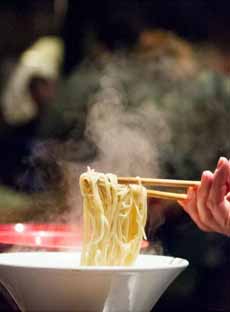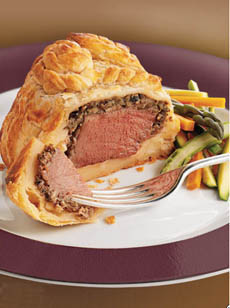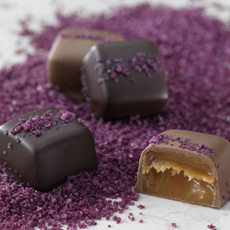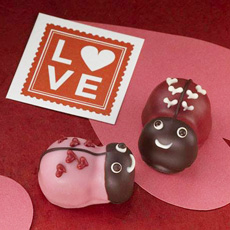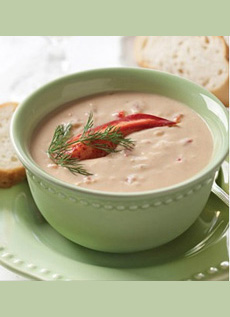|
Pot pie (also spelled potpie) is a favorite American comfort food. But the name is misappropriated. Originally, “pot pie” referred to a crustless mixture of meat pie ingredients and noodles, stewed in a pot on the stove top.
Over time, the term became used to designate a meat pie with conventional crusts, baked in the oven in a deep pie plate or casserole dish. There’s more on the history of meat pies below.
The pot pie can be baked without a bottom crust but with a conventional top crust or a biscuit topping (the dough is dropped onto the top), like a cobbler. Personally, we prefer a crisp biscuit to a crust.
Here’s a recipe for a “crustless” pot pie using biscuits comes to us from PotatoGoodness.com; the original recipe was sent to them by GoodLifeEats.com. Prep time is 1 hour, cook time is 1 hours, 35 minutes.
RECIPE: TWO POTATO BEEF & VEGETABLE POT PIE WITH ROSEMARY BISCUIT CRUST
Ingredients For 6 Servings
For The Filling
2 teaspoons olive oil
1-1/4 pound stew beef, cut into bite sized pieces
1 teaspoon salt
1/2 teaspoon pepper
1 large yellow onion, diced
12 ounces sliced mushrooms
1/3 cup red wine
4 carrots, peeled and sliced into rounds
3 stalks celery, chopped
2 parsnips, peeled and sliced into rounds
2/3 cup frozen of fresh shelled peas
1-2 red potatoes, cut into bite sized cubes
2 bay leaves
3 cloves garlic, minced
1-2 teaspoons fresh thyme leaves
1/2-3/4 teaspoon finely minced fresh rosemary
For The Sauce
4 tablespoons butter
1/2 cup plus 1-1/2 tablespoons flour
1/3 cup milk
2-1/4 cup beef broth
For The Biscuits
1-2 baked russet potatoes
2/3 cup buttermilk
1 cup all purpose flour or freshly ground spelt flour
3/4 cup cake flour
1 teaspoon sugar
2-1/2 teaspoon baking soda
1/2 teaspoon baking soda
1/2 teaspoon salt
8 tablespoons (1 stick) very cold or frozen butter
1-2 teaspoons very finely minced fresh rosemary
Preparation: Filling
1. HEAT the olive oil in a large cast-iron skillet or pan. Add the beef, season with salt and pepper and cook over medium-high heat until it is browned on all sides. Remove and set aside on a plate.
2. ADD onion to the pan, with additional oil as necessary. Sauté until tender, about 5 minutes. Add the mushrooms and sauté for an additional 5 minutes.
3. RETURN beef to the pan and add the red wine to deglaze, taking care to scrape up any browned bits on the bottom of the pan as they offer a lot of flavor (see how to deglaze a pan). Cover and cook over low heat for 30-40 minutes, or until beef is tender. (Optional technique: use a pressure cooker on high pressure for 10 minutes.) Meanwhile…
4. PREHEAT the oven to 400°F and prepare the sauce. In a medium saucepan, add the butter and melt. Whisk in the flour, then the milk and broth. Bring to a boil and simmer until thickened, about 5 minutes. Set aside.
5. UNCOVER and add the carrots, celery, potatoes and parsnips. Cook for 5 minutes. Add the peas. Stir in the sauce.
6. POUR the ingredients into a large casserole dish and top with the uncooked biscuits (recipe below). Bake for 35 minutes. Cool 5 minutes before serving.
Preparation: Biscuits
1. REMOVE the flesh from the baked potatoes. Mash it with a fork or press it through a potato ricer. This will take 1-2 potatoes and should result in a total of 1/2 cup of potato. In a small mixing bowl, combine the 1/2 cup potato with the buttermilk. Whisk until smooth and set aside.
2. COMBINE in a medium bowl the flours, sugar, baking powder, baking soda and salt. Whisk until well sifted. Cut the butter into the flour mixture either using two knives, a pastry blender, or a cheese grater (to grate frozen butter into the flour mixture). Add the rosemary and stir to combine.
3. MAKE a well in the center of the flour mixture and add the buttermilk potato mixture. Stir until combined, and then when you can’t stir it anymore, turn it out onto a lightly floured surface and gently knead until you can form a rough ball.
4. FLATTEN the dough into a circle about 1/2-3/4 inch in thickness. Using a biscuit cutter or a drinking glass (about 2-1/2″ to 3″ in diameter for the listed baking time) turned upside down, cut as many rounds as you can. Using the dough scraps, form another circle of the same thickness. Repeat cutting until you have used all the dough.
POT PIE HISTORY
Meat pies likely date back to milling of flour in ancient times—but before the invention of pie plates. Very thick crusts were used as baking vessels, and were popular banquet fare during the Roman Empire.
By the 16th century, the English gentry revived the ancient custom of meat pies. Venison was the meat of choice. The recipe crossed the pond to America, where it became as American as…pot pie! Chicken, beef and vegetable pot pies are the most common; but if you have venison, by all means, enjoy a historic venison pot pie.
|
|
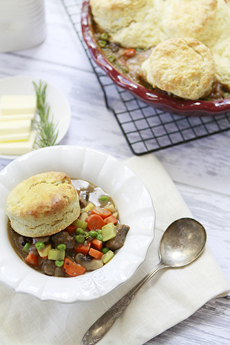
[1] Pot pie without the pie: Use biscuits instead (photo © Good Life Eats).

[2] Beef stew cubes (photo © Lobel’s Meats | NYC)

[3] Fresh thyme adds great flavor notes: earthy, slightly lemony, minty (photo © Good Eggs).

[4] Parsnips are a very under-appreciated vegetable in the U.S. We put them in chicken soup, too (photo © Barbro Bergfeldt | Fotolia).

[5] Bay leaf and beef stew are a natural pairing (photo © Monika Grabkowska | Unsplash).
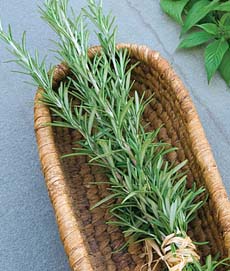
[6] Fresh rosemary makes a difference (photo © Burpee).
|

